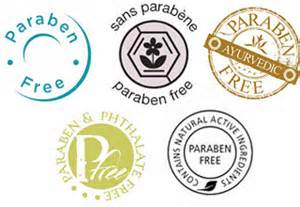 Paraben Free! So many people are relieved to see these words on a skincare product that they find them to be huge selling points, even when they really don’t know what they mean. There has been a ton of controversy surrounding the use of parabens, yet most people don’t even know what they’re supposed to do and what their purported dangers are.
Paraben Free! So many people are relieved to see these words on a skincare product that they find them to be huge selling points, even when they really don’t know what they mean. There has been a ton of controversy surrounding the use of parabens, yet most people don’t even know what they’re supposed to do and what their purported dangers are.
Parabens are a class preservatives that are used in over 13,000 products, from foods to personal care products. The most common ones are methylparaben, propylparaben, butylparaben, and benzylparaben.
In 2004, a study was conducted at the University of Reading in England that suggested a link between breast cancer and parabens, due to parabens’ estrogen-like effect in the body (estrogen being one of the primary fuels of breast tumors). This study caused an immediate and widespread response in the skincare industry, with people calling for the removal of parabens from skincare products.
But not so fast! A closer look at the study shows that the link between parabens and breast cancer is not nearly as strong as originally it may seem. The study that began this worldwide furor was done on only 20 women, which hardly qualifies as an adequate control group. One report says this study was actually done on 40 women, but this is still a woefully small control group. Additionally, the study was done only on cancerous breast tissue, with no study done on healthy breast tissue for comparison.
There is a reason parabens are so widely used. What has made them so popular is the fact that they are effective in extremely small quantities. When listed on packaging, which is in order of quantity, they are almost always listed last. Which brings up an interesting dilemma: if parabens are omitted in favor of another preservative, will the other preservative need to be used in higher quantities to be as effective? Will it be safe in those quantities? Will it be found, in subsequent studies, that the replacement preservative is just as carcinogenic as parabens were? The only other option is for the product to be preservative-free, in which case the user must be extremely diligent about replacing the product regularly, at least every six months or so, depending upon the product. A rancid product poses myriad health risks of its own.
So bottom line (IMHO, at least), is that the jury is still out on this one. If your product line is paraben-free, great. But if you should find that your favorite skin cream/ shampoo/ lipstick/ body lotion contains a paraben, don’t panic — at least not until there’s some substantial evidence you should!
